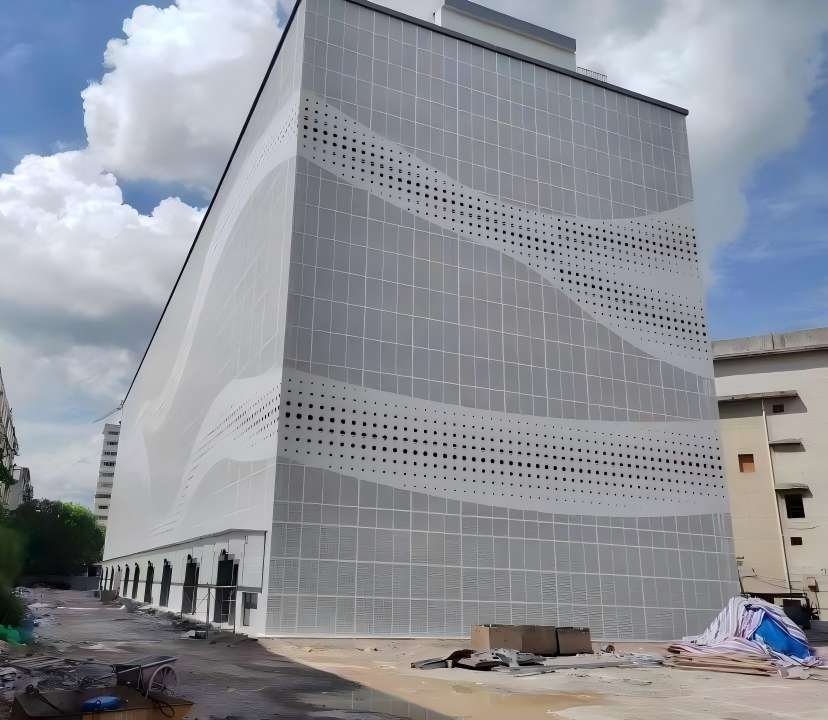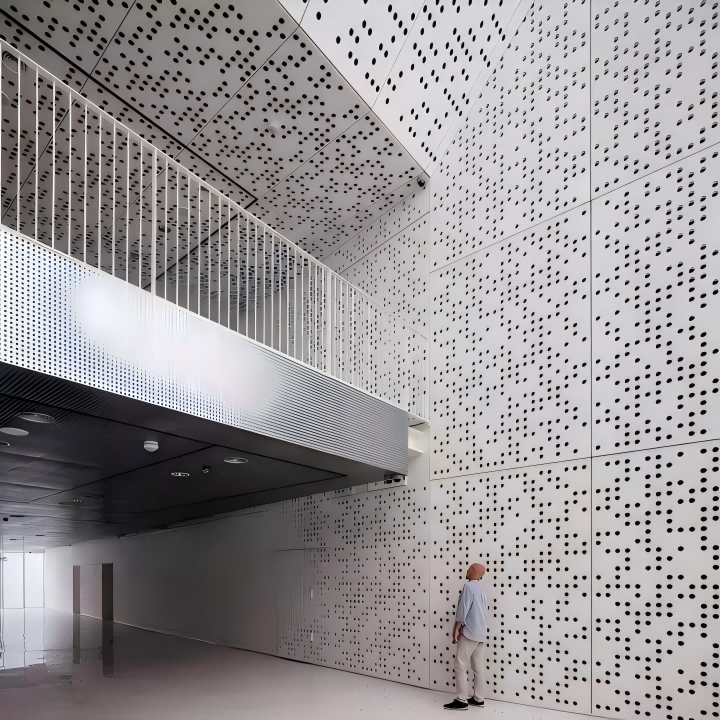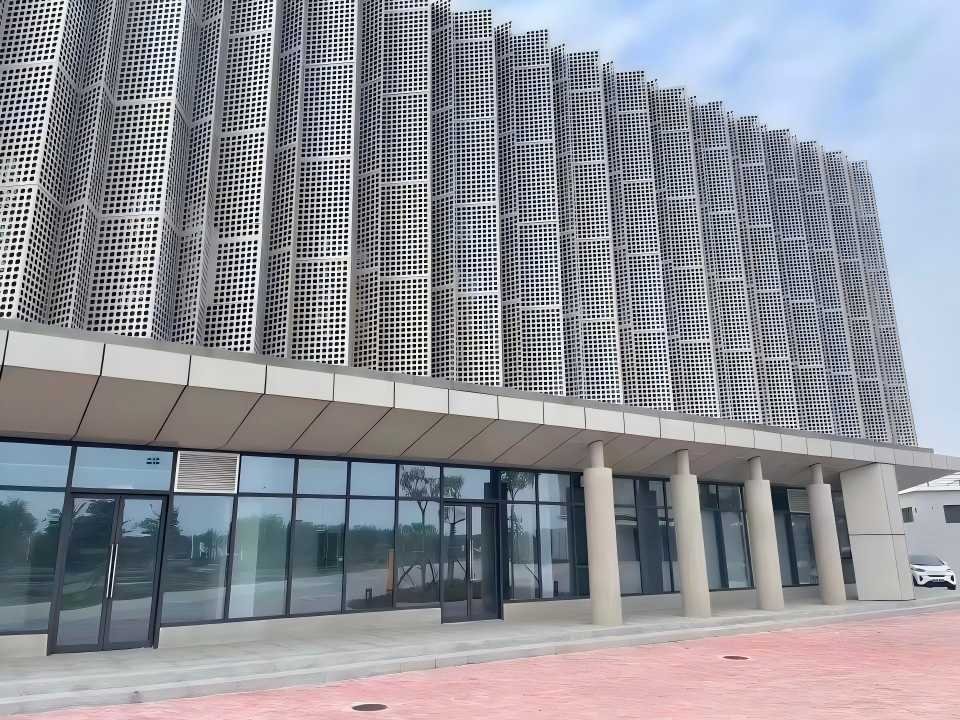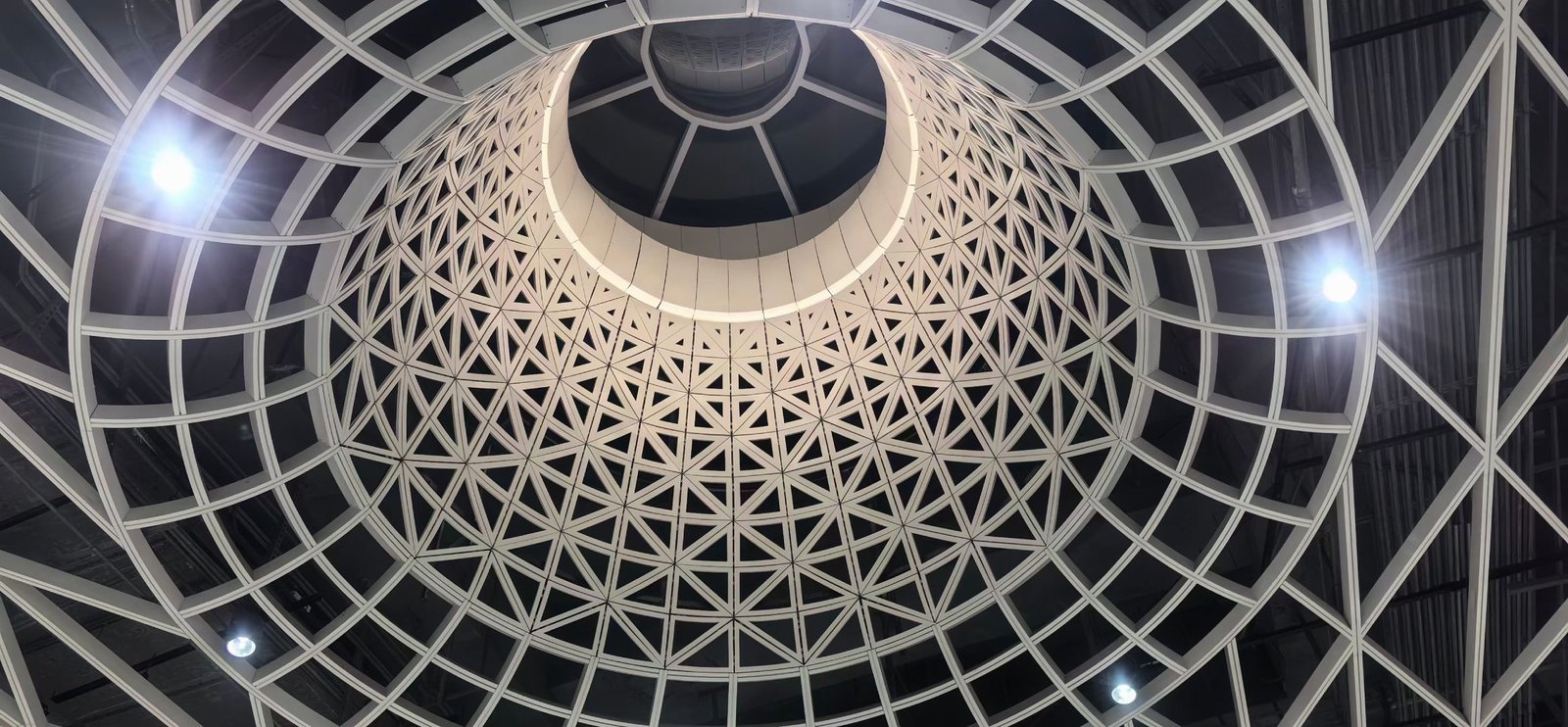Why aluminum perforated panels Are Ideal for Facades and Cladding

alufrom
October 22, 2024
In modern architecture, aluminum perforated panels are quickly gaining popularity for use in building facades and cladding systems. Their combination of aesthetic appeal, durability, and functionality makes them an ideal choice for both residential and commercial projects. In this article, we’ll explore the reasons why aluminum perforated panels are an excellent option for facades and cladding, as well as the benefits they provide in various architectural designs.
1. Aesthetic Flexibility and Design Options
One of the primary reasons architects and designers love aluminum perforated panels is their versatility in design. These panels are available in a wide range of patterns, shapes, and sizes, allowing for custom designs that enhance a building’s appearance.
- Customizable Designs: Aluminum perforated panels can be manufactured with different hole sizes and shapes, such as circles, squares, and unique patterns. This allows architects to create intricate designs that can give any building a distinct and modern look.
- Creative Light and Shadow Effects: When used as exterior facades, perforated panels allow light to pass through, creating dynamic shadow patterns inside the building. This effect can enhance both the interior and exterior aesthetics, giving the facade a more striking visual appeal.
- Various Finishes and Colors: Aluminum perforated panels come in a variety of finishes, such as powder-coated, anodized, or painted, offering designers the flexibility to choose the right color and finish for their project.
2. Durability and Weather Resistance
Aluminum is known for its durability and resistance to corrosion, making it an ideal material for outdoor applications such as facades and cladding. This is especially important in harsh weather conditions where other materials might deteriorate over time.
- Corrosion Resistance: Aluminum naturally forms a protective oxide layer that prevents it from rusting or corroding when exposed to moisture and air. This makes aluminum perforated panels perfect for coastal areas or regions with high humidity.
- Lightweight but Strong: Despite being lightweight, aluminum is a strong material that can withstand impact and stress, making it ideal for cladding systems that need to endure various environmental forces without adding too much weight to the structure.
- Low Maintenance: Unlike other materials that may require regular maintenance or protective coatings, aluminum perforated panels retain their appearance and structural integrity over time with minimal upkeep.
These properties ensure that aluminum perforated panels offer long-lasting performance, even in challenging environments, making them a cost-effective choice for building exteriors.


3. Improved Ventilation and Airflow
One of the unique advantages of perforated panels is their ability to allow for natural ventilation without sacrificing the building’s aesthetic appeal. When used as part of a facade or cladding system, aluminum perforated panels can help regulate airflow and improve the building’s overall performance.
- Natural Ventilation: The perforations in the panels enable air to flow through freely, which can help reduce the need for mechanical ventilation systems. This is particularly useful in parking garages, industrial buildings, or public spaces where ventilation is key to maintaining a comfortable and safe environment.
- Temperature Regulation: By promoting natural ventilation, perforated panels can also help regulate indoor temperatures, reducing the need for artificial cooling. This makes the building more energy-efficient and environmentally friendly.
This combination of aesthetic design and functional ventilation makes aluminum perforated panels a smart choice for facades, particularly in regions with varying weather conditions.
4. Sunlight Control and Energy Efficiency
Aluminum perforated panels provide an excellent solution for managing sunlight, helping to reduce heat gain and improve energy efficiency in buildings. The strategic placement of perforations allows for effective sun shading without completely blocking natural light.
- Sun Shading: When used as a cladding or facade element, perforated panels can block excessive sunlight, reducing glare and heat inside the building. This can be particularly beneficial for large commercial buildings or office spaces that need to manage indoor temperatures efficiently.
- Natural Light Enhancement: Perforated panels can be designed to allow filtered natural light to enter the building, creating a pleasant, well-lit interior environment without relying heavily on artificial lighting.
- Energy Savings: By reducing the reliance on air conditioning and artificial lighting, perforated panels can contribute to significant energy savings over time. This makes them a sustainable choice for building projects focused on energy efficiency.
With aluminum perforated panels, you can strike a balance between sunlight control and natural light enhancement, improving both comfort and energy efficiency in your building.
5. Acoustic Performance
In addition to improving ventilation and sunlight control, aluminum perforated panels also offer excellent acoustic benefits. This is particularly useful in urban environments or areas where noise reduction is a priority.
- Noise Reduction: Perforated panels help absorb and diffuse sound waves, reducing noise pollution from external sources such as traffic or nearby industrial activities. This makes them ideal for use in office buildings, schools, or residential complexes located in noisy areas.
- Enhanced Acoustics: When used inside the building, perforated panels can also improve the acoustics of a space by reducing echo and reverberation. This makes them a popular choice for auditoriums, conference rooms, and other spaces where sound quality is important.
The combination of sound control and aesthetic appeal makes aluminum perforated panels a multifunctional element in building design.
6. Sustainability and Eco-Friendliness
Sustainability is becoming a key consideration in modern architecture, and aluminum perforated panels contribute to eco-friendly building practices in several ways.
- 100% Recyclable: Aluminum is fully recyclable without losing its properties, making it a sustainable material choice. Using recycled aluminum in construction reduces the environmental impact of the building project.
- Energy Efficiency: As mentioned earlier, the use of perforated panels helps reduce the need for artificial cooling and lighting, further contributing to the building’s energy efficiency.
- Low Carbon Footprint: The lightweight nature of aluminum means that it requires less energy to transport and install, reducing the overall carbon footprint of the construction process.
By incorporating aluminum perforated panels into your facade or cladding design, you’re not only enhancing the building’s performance but also contributing to sustainable construction practices.


